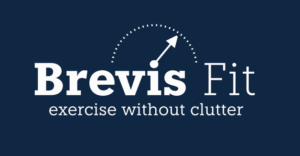Introduction
Measuring exercise progress is an essential element of our exercise journey. Measuring progress is the only way to understand if our Exercise program works or not. But, because Exercise has so many benefits, measuring progress can become quite a complex task.
This blog consists of three parts. In this part, we start with the definition. We introduce two main changes that we monitor: changes in body shape and changes in strength. In the following two parts, we will continue to dive deep into each aspect.
Exercise Progress — What exactly are we after?
Exercise progress is a measure of improved muscle quality, directly produced by Exercise. Muscle quality is expressed through different aspects, such as:
- an increase in strength,
- an increase in muscle mass,
- an improved energy metabolism, etc. [1].
Thus, the aim or target of measuring exercise progress is to monitor for those changes.
KEY PERFORMANCE INDICATORS
Since it is difficult to measure muscle quality using our senses, we need to establish some key performance indicators — KPIs. A KPI should relate to or reflect the desired improvement in muscle quality. With KPIs, we know if our exercise program is producing the desired effects. And if it is, we can assume the following:
- the exercise intensity was high enough to stimulate new positive adaptations,
- the resting period was long enough to produce new adaptations.
In a different case, when our KPI’s don’t reflect an improvement, at least one of the above statements is false. In that respect, we need to adjust our exercise program to steer it back to the progress lane. This process is an ongoing one and makes up the basis of our Exercise journey.
The Exercise Journey - In it for the long hall
An Exercise journey is our ongoing experience with Exercise. Our Exercise journey should not have an end. It has only a direction and many checkpoints.
IMPROVE LIFE QUALITY
The direction of an Exercise journey should be an improvement in our life quality. And this should be for the short as well as long term. It is an investment for the future, which requires steady and persistent commitment. However, Exercise shouldn’t occupy too much of our time. Exercise is merely a tool.
Exercise, so you can overcome physical challenges
Similar to learning, it does not do any good if we study without having some real live situations, where we can use our knowledge. The same is with Exercise. Exercise stimulates improvement, but the fun of moving around and doing physical work is in the other work we do in our life. Not in Exercise. So the preferred approach to Exercise, take into time efficiency as well.
Exercise is a longterm investement
For an analogy, imagine two contrasting financial investment strategies. On one side we have the daily trading strategy, and on the other side, there is buying and holding the investment. The former takes more time and involves more risk, in exchange for (potential) higher yield.
With Exercise, we are investing in the future. We are not aiming for the quick, dirty, and risky. We aim for sustainability and long-term progress. But to keep the eyes on the (long term) price, measuring progress is that much more important.
The Basic Types of Exercise Progress — Change in Body Shape and Strength
As discussed before, the purpose of Exercise is to improve our muscle quality [1]. In that regard, we have already defined many markers of progress, such as:
- increase oxygen uptake,
- improved energy metabolism,
- increased muscular size and strength,
- and improved neural efficiency and motor unit activity.
We notice these improvements in two major forms:
- changes in body shape and,
- changes in strength.
SEPARATING STRENGTH AND SIZE
Throughout our exercise journey, we track both types of changes. In general, it is assumed that exercise will improve all of the aspects. However, there are arguments that muscle strength and size are not related concepts [6]. This indicates that one could specialize or at least emphasize one over the other. Based on recent reports, strength has been established as the more critical [7]. Yet, it is hard to dismiss positive benefits on our metabolism and our body shape by adding more muscle mass. Thus at BrevisFit, we use Exercise protocols that improve both strength and body shape.
Changes in Body Shape
Exercise positively improves our body shape by increasing muscle mass and reducing body fat.
Changes in Strength
Exercise improves our strength, which allows us to be more physically active.
Changes in Body Shape
Changes in body shape alter our dry tissue weight. The dry tissue weight is our body weight without body fat and water. Exercise improves this through the following:
- reduction in body fat,
- increase in muscle size, and
- growth of bone density [2]–[5].
Benefits of improved body shape are metabolic, practical and physiological. A reduced amount of body fat and higher amount of muscle mass makes a faster metabolism, which is geared towards physical activity. Second, loosing weight reduces the stress on the joints and muscles, reduces the heat we produce (and consequntly sweat) and makes are more nimble. Lastly, having an improved body shape also helps with our self confidence.
MEASURING CHANGES IN BODY SHAPE
These are the most beneficial changes in regard to an improved body shape. Measuring progress in this regard includes:
- measuring our body weight,
- measuring the circumference of limbs,
- measuring body fat with skinfold calipers,
- observing our body shape in the mirror,
- analyzing body composition with biometric impedance scales and DXA scanners, etc.
Changes in Strength
With strength, we are talking about our muscle’s ability to produce force. Stronger muscles produce more force and fatigue at a slower rate. This means that given the same resistance, the stronger muscle will fatigue slower. An increase in strength, therefore, reduces the fatigue we feel after a long day, prevents spasms and irritations from doing physical work and allows us to partake in more play activities.
MEASURING PROGRESS IN STRENGTH
To monitor progress, we therefore need to measure and compare the force output of our muscles. This we do either by observing performance within a workout or outside our workouts, such as:
- performance of the exercise we perform in our workouts,
- performance of particular exercise movement,
- performance of our daily tasks and activities.
Chase the stimulus, not numbers
To track our progress, we need to record and store our KPIs. For that, we can use notebooks and paper forms, software apps, or high-tech exercise devices. While the option here is also to rely on one’s memory, it is something to have it stored on a dedicated machine or object. So at BrevisFit, we encourage you to store and maintain your progress charts.
BETTER NUMBERS ARE GUIDES NOT GOALS
But, relying too much on the numbers is also not the answer. While it is vital to monitor our KPI’s, one should not simply chase numbers. This is especially important when it comes to strength, since the likelihood of injury increases. As was stated before, the aim of Exercise is only to fatigue the muscles. Reaching a better KPI number (maximum force output) but reducing fatigue is the wrong approach. And usually, it leads to a worse adoption since the fatigue level was lower, but the stress on the joints was higher.
FOCUS ON FATIGUE
For the best results, it is crucial to emphasize the correct order and focus. We produce a quality Exercise stimulus by fatiguing muscles to a deep level (preferably by reaching a point of muscular failure). Then we record our performance of this fatiguing protocol and monitor it through time. If enough intensity and adequate rest is given, progress will be visible.
Conclusions
Monitoring exercise progress simply means tracking changes in body shape and strength. Both strength and body shape are very important for our life quality. A good body shape shows healthy metabolism, while strength reduces pain and fatigue. Monitoring each aspect requires some tooling, from simple to advanced. Yet, the most important thing to remember is to track those changes, no matter the measuring tool. This concludes the introductory part on the topic of measuring progress. Now it follows a description of measuring changes in body shape and muscle strength.

